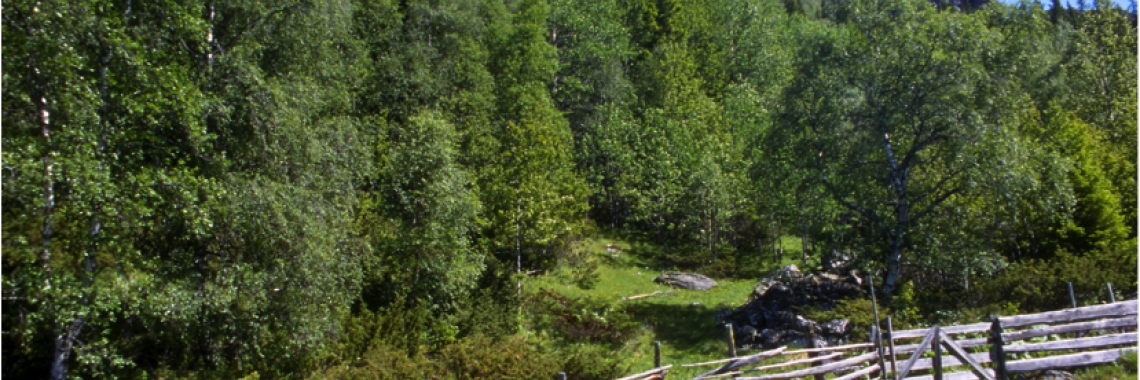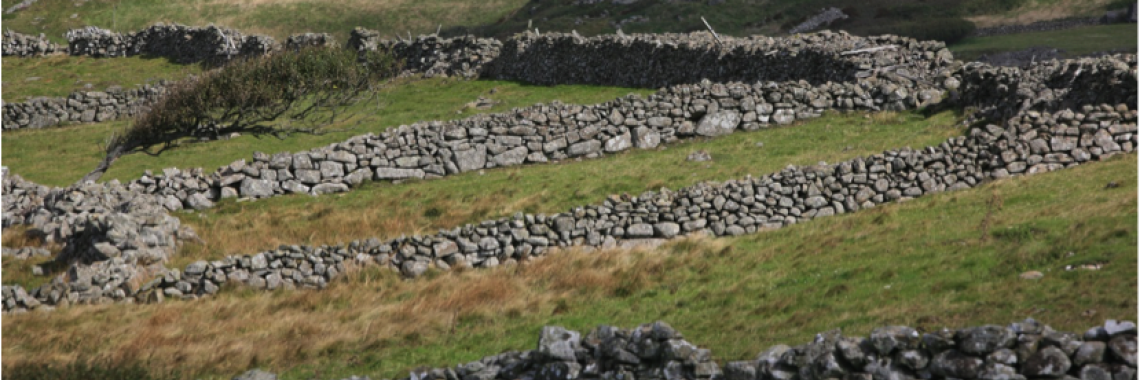Enclosed land in Norway
27.09.2017, by Bénédicte Gaillard
Research: Sebastian Eiter, Oskar Puschmann et al, NIBIO Norwegian Institute of Bioeconomy Research; upload: Bénédicte Gaillard
Enclosed fields in Norway are usually defined and talked about from the perspective of the stone walls that have been set up to create them. A Norwegian term for soil and cultivated land is jorde, which originates from old-Norse gerði (Norw. Gjerde), meaning ‘fence’, i.e. an area of fenced-in farmland (arable land and meadow) in the immediate surroundings of the farmstead. Most farmland cultivation in Norway included clearance of the land from stones, initially but also annually after the frost season. The oldest stone walls known are associated with farmland and originate from the Early Iron Age (c.500 BC – AD 600).
Flaten, H. & Ulsaker, I.H. 1906. Hemsedal og Hemsedøler. Fram’s bogtrykkeri, Fargo ND.
Marthinsen, E. 2002. 2.2.1. Gamle steingjerder. Riksantikvarens informasjon om kulturminner, 2. Kulturlandskap. Riksantikvaren, Oslo.
Puschmann, O. 1996. Et landskaps kulturkvaliteter: hvordan se den nære fortid i dagens jordbrukslandskap. Kildebruk og analyse av tre eksempelområder i Hemsedal kommune. NIJJOS-rapport 12/96, Norsk institutt for jord- og skogkartlegging, Ås.
Puschmann, O., Reid, S.J., Fjellstad, W., Hofsten, J. & Dramstad, W. 2004. Tilstandsbeskrivelse av norske jordbruksregioner ved bruk av statistikk. NIJOS-rapport 17/04. Norsk institutt for jord- og skogkartlegging, Ås.
Puschmann, O., Reid, S.J. & Lågbu, R. 2008. Evaluering av RMP-2006: Kulturlandskapstiltak. Oppdragsrapport fra Skog og landskap 02/2008. Norsk institutt for skog og landskap, Ås.
Puschmann, O. & Stokstad, G. 2010. Status og utvikling i jordbrukets kulturlandskap i Nordland, Troms og Finnmark. Rapport frå Skog og landskap 06/2010. Norsk institutt for skog og landskap, Ås.
Sandnes, J. & Stemshaug, O. 1980. Norsk stadnamnleksikon. 2nd ed. Det Norske Samlaget, Oslo.
Stokstad, G. & Puschmann, O. 2011. Status og utvikling i jordbrukets kulturlandskap: Hordaland, Sogn og Fjordane, Møre og Romsdal, Sør-Trøndelag og Nord-Trøndelag. Rapport fra Skog og landskap 13/2011. Norsk institutt for skog og landskap, Ås.
Stokstad, G. & Puschmann, O. 2012. Status og utvikling i jordbrukets kulturlandskap: Buskerud, Telemark, Aust-Agder, Vest-Agder og Rogaland. Rapport fra Skog og landskap 13/2012. Norsk institutt for skog og landskap, Ås.
There are large regional differences in the occurrence of enclosed fields: By far the largest amount can be found along the Southern and Western Norwegian coast and fjords, particularly in the morainic areas of Rogaland county. In Eastern and Central Norwegian lowland farming areas stone walls are basically absent where soil is loamy, but still present to some degree in areas with morainic ground material. Stone walls are recognized as part of the agricultural landscape heritage, and financial support to maintenance work has become part of several regional agri-environmental subsidy schemes.
Stones were collected in heaps, in steeper areas used to build terrace walls, possibly combined with heaps, or stone walls (Norw. steingjerder) around the infields (cultivated arable land and meadows). Lower stone walls were frequently combined with a wooden fence on top (skigard or rælegard), to make them effective barriers for livestock. The wooden fences were more durable when built upon stone walls than on the ground, too, but most of the wooden constructions have been replaced with wire fences later on, to utterly reduce efforts necessary for maintenance.










